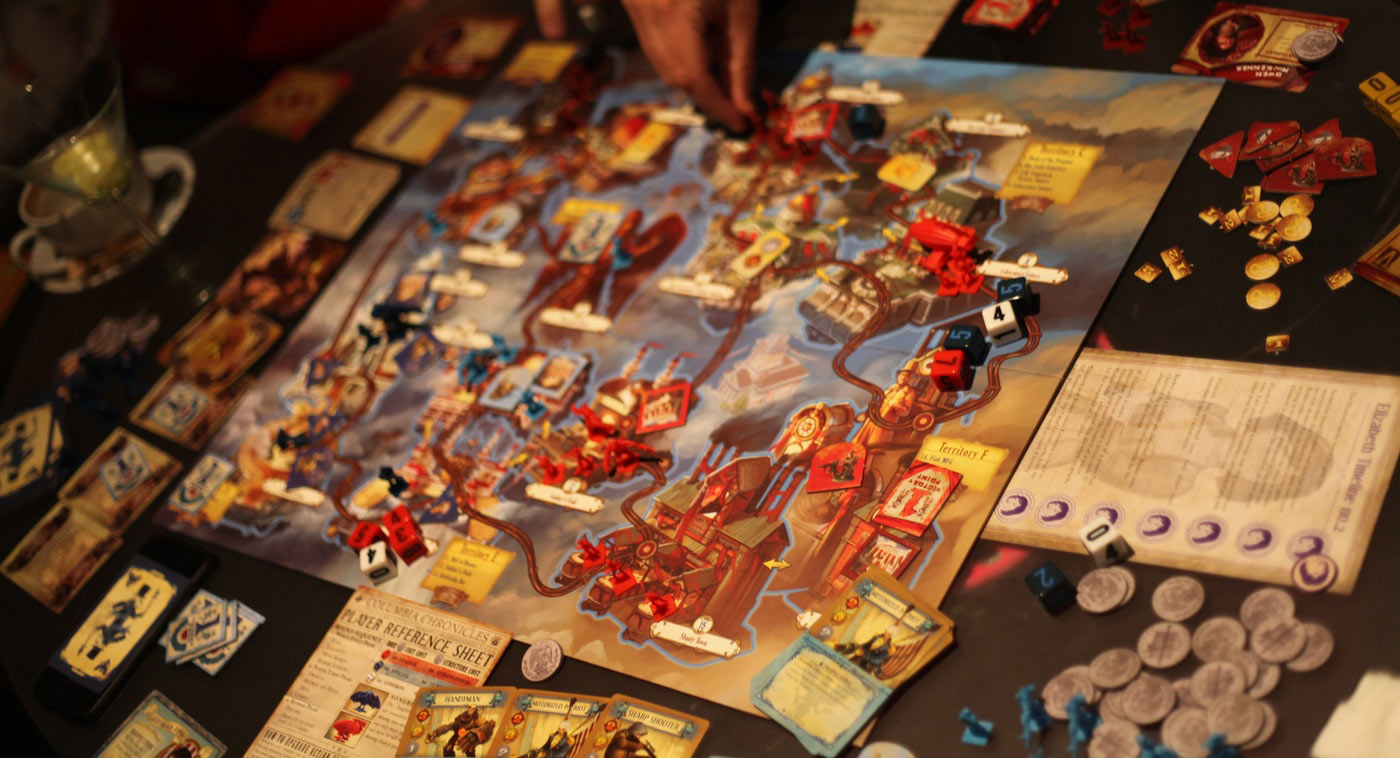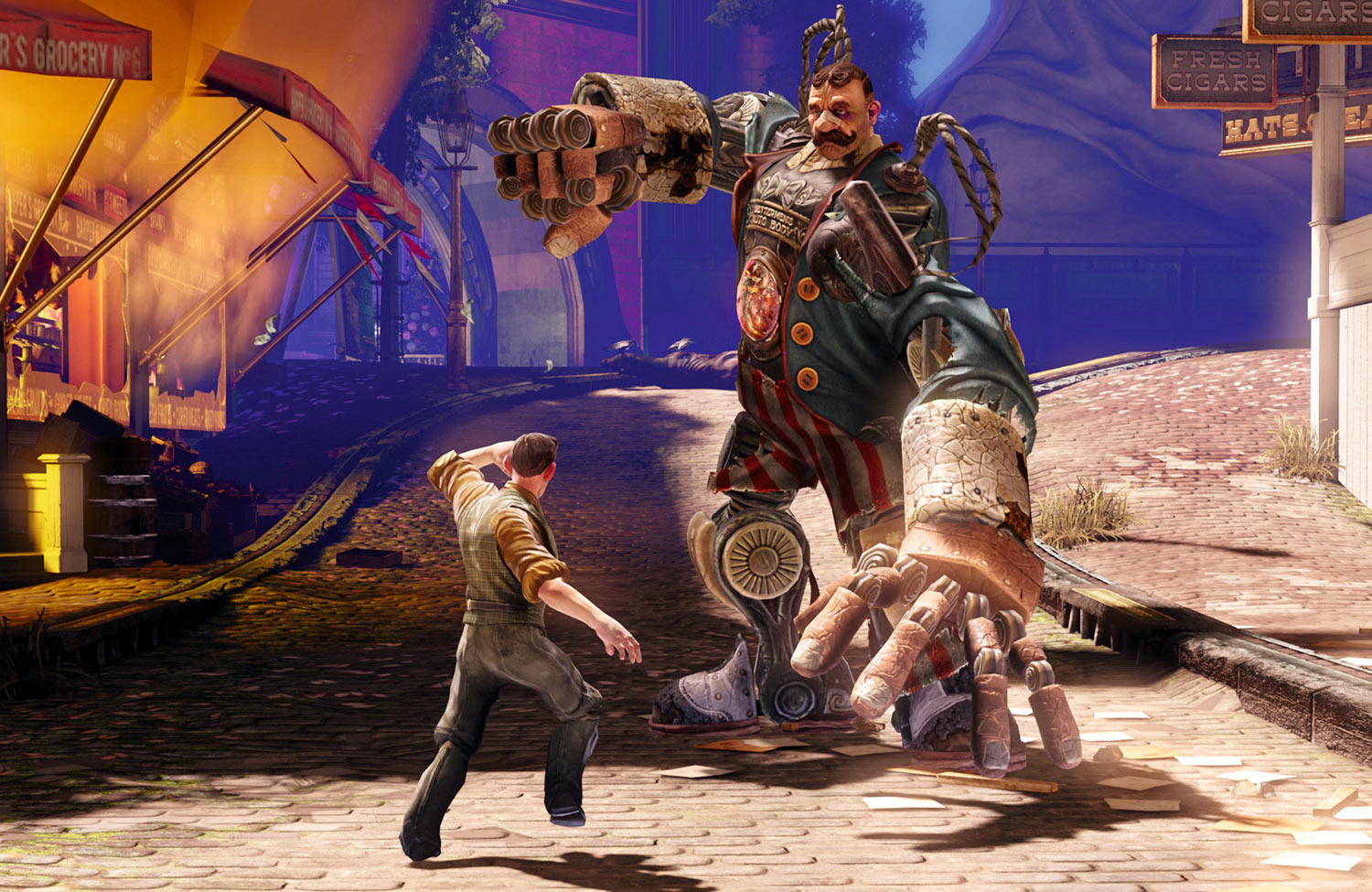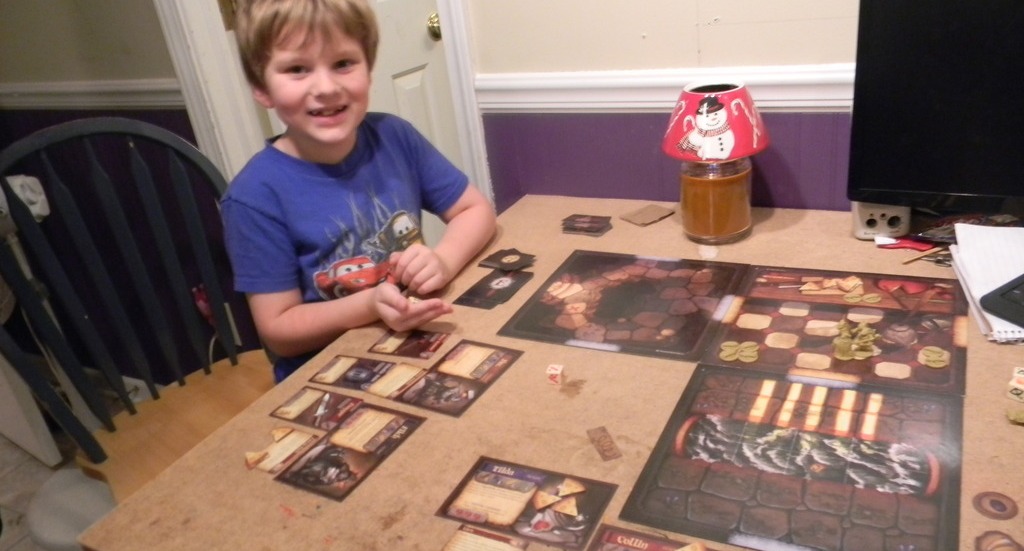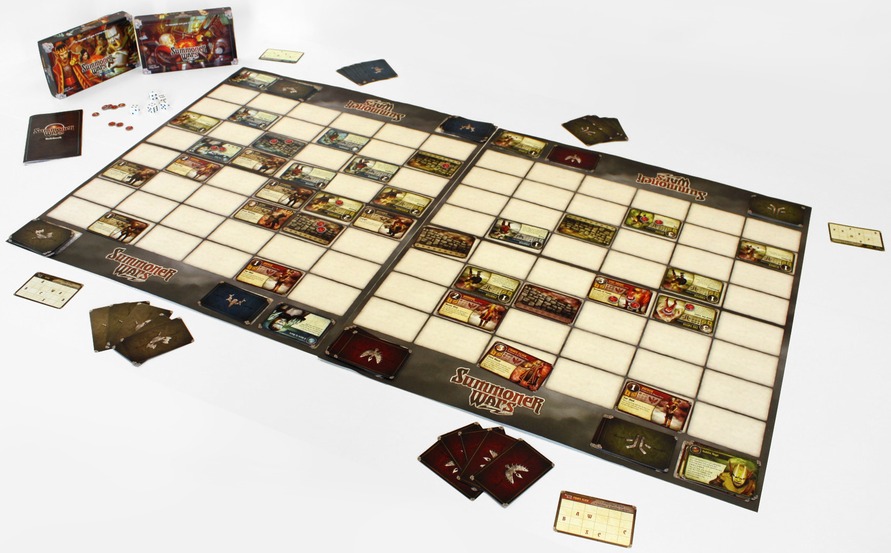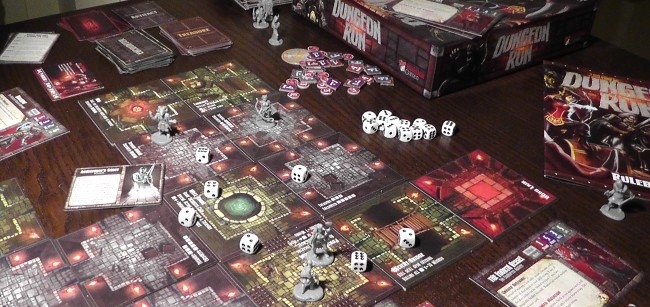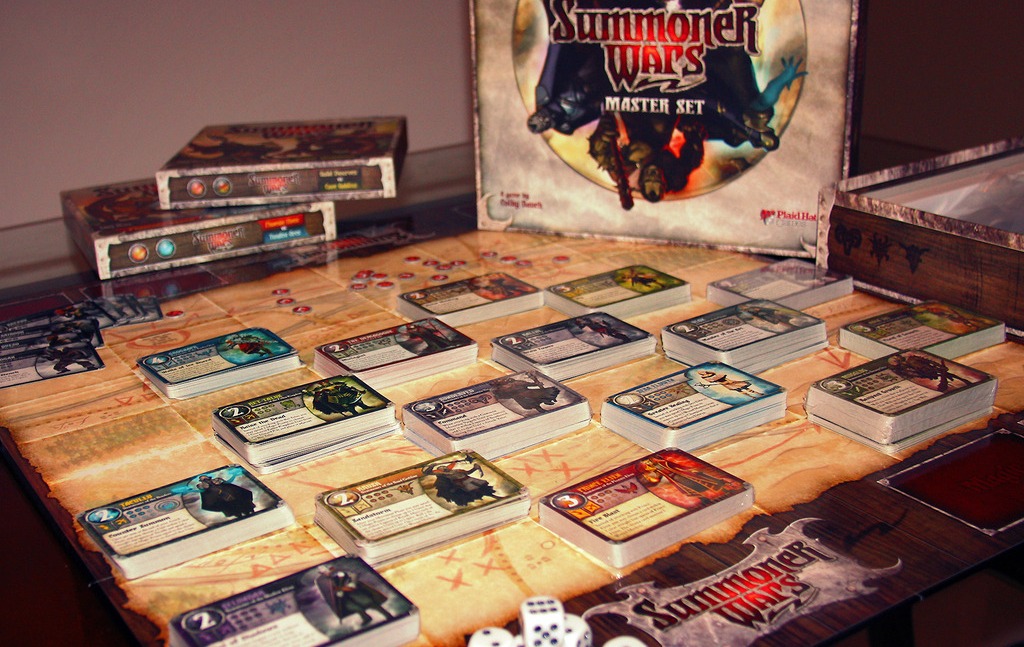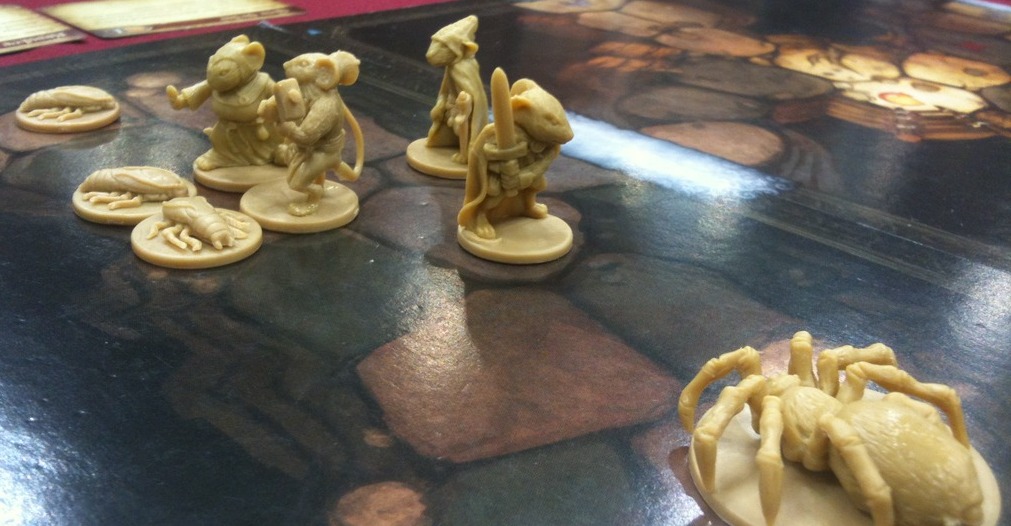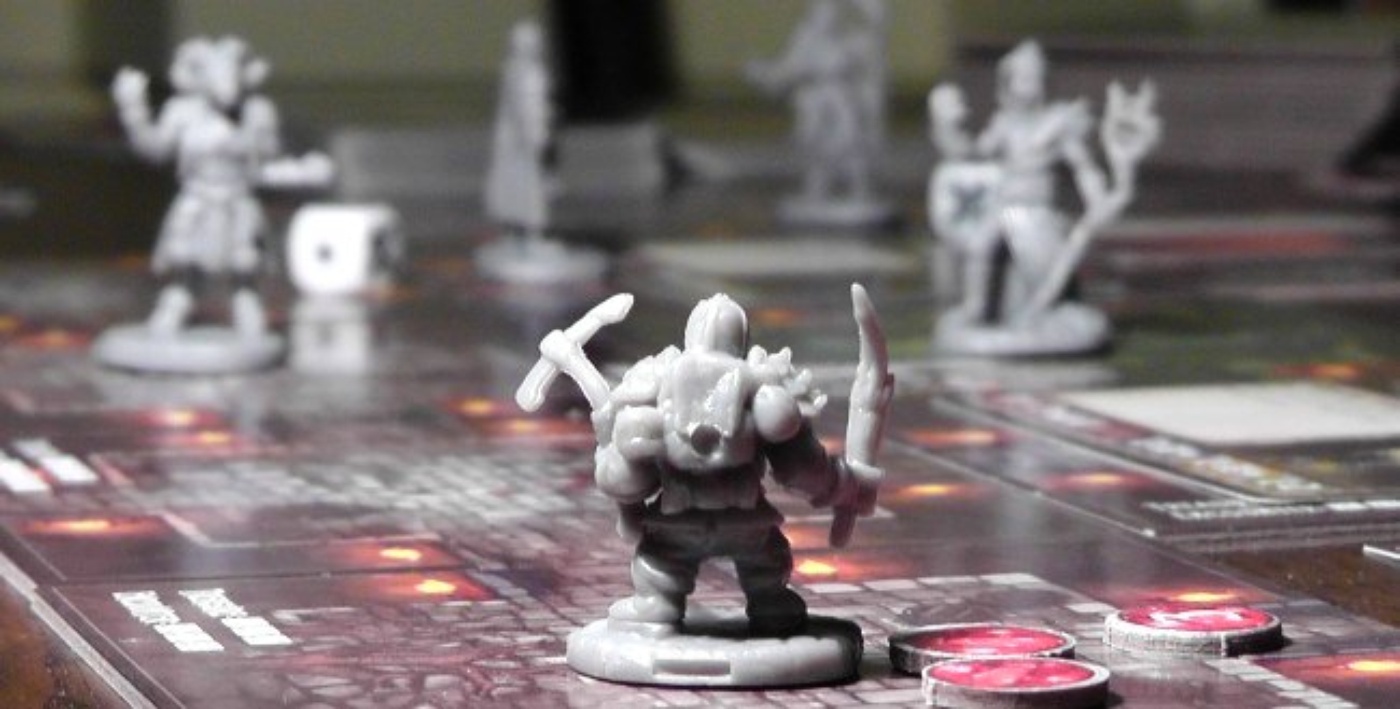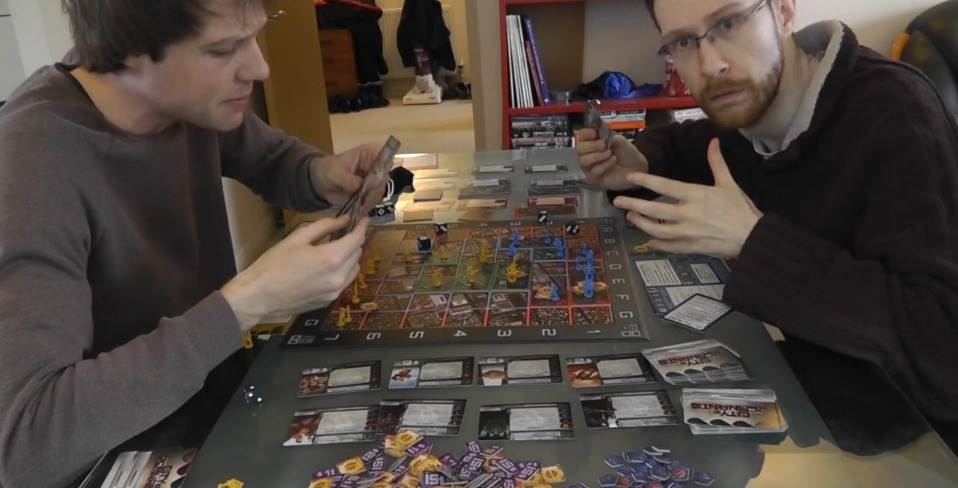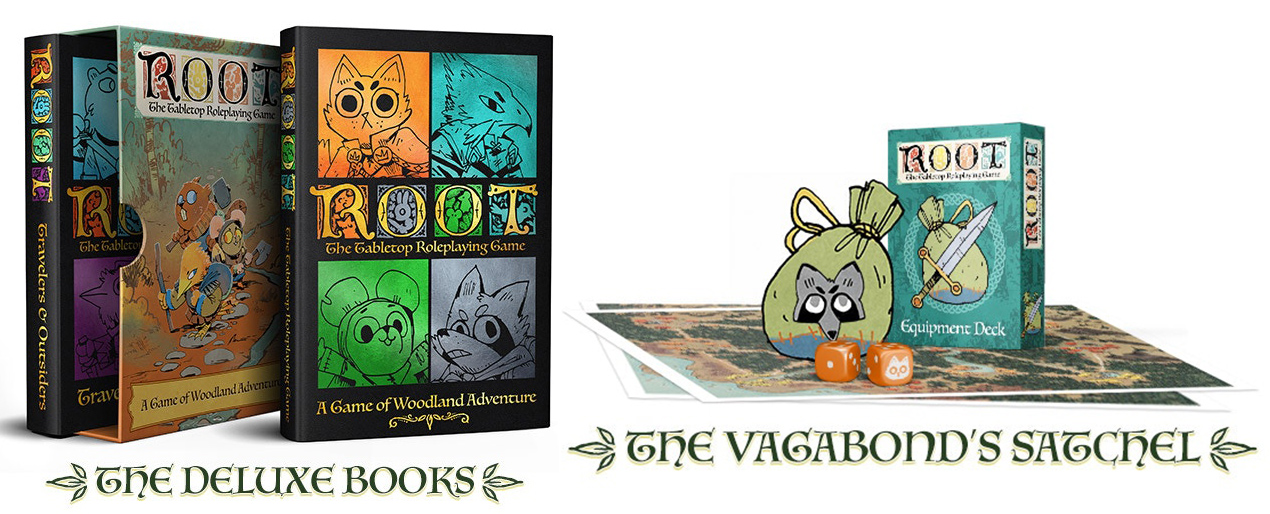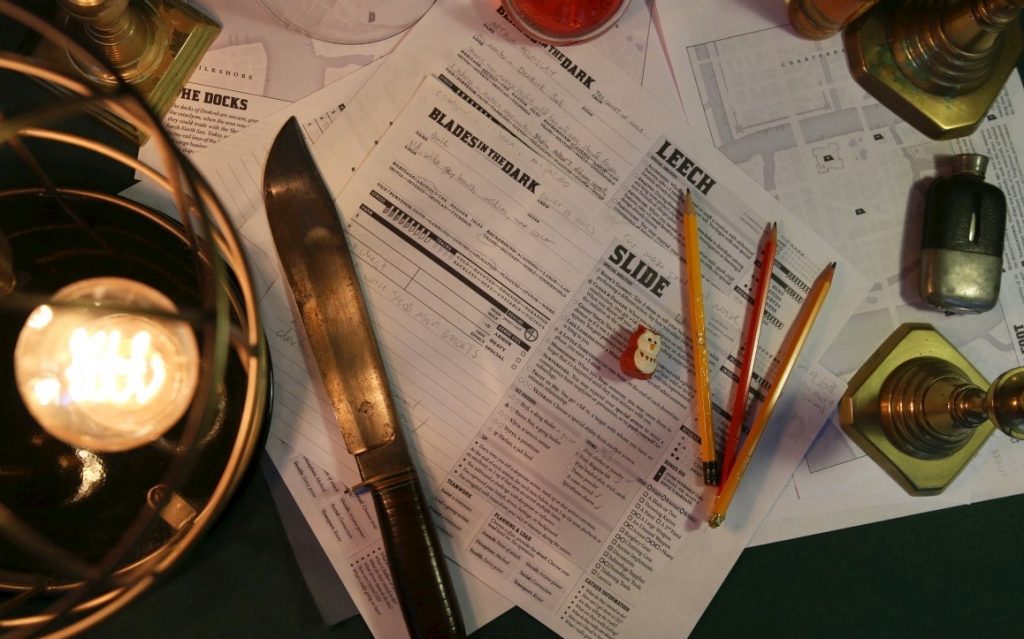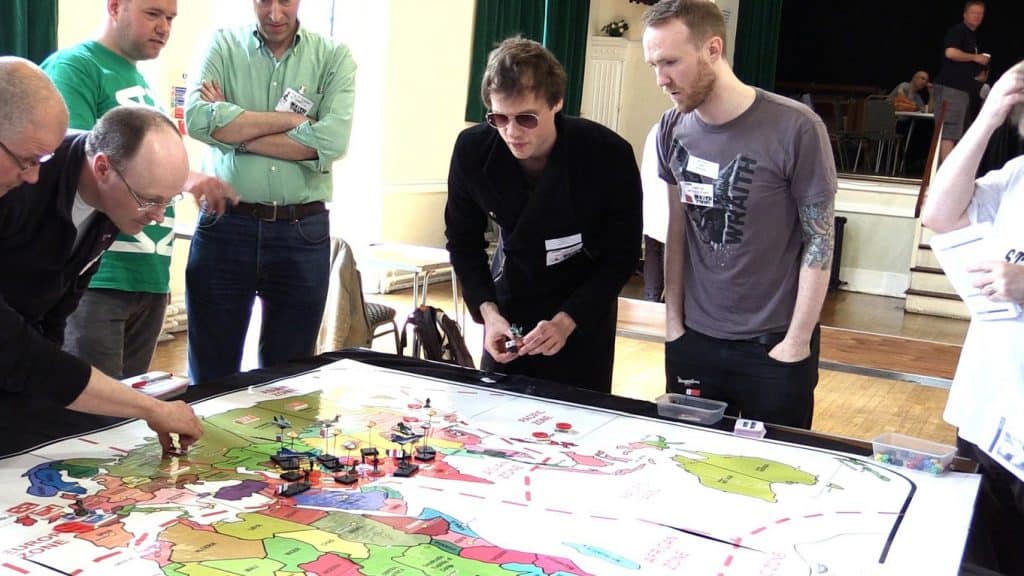[Everybody likes Colby Dauch. After starting Plaid Hat Games at the ripe age of 27 with a game of his own design, he’s managed to publish one very interesting game a year (from different designers) in each of the four years since, and has grown from Heroscape fanboy to capable and committed entrepreneur — a transition that many designers-turned-publishers make with far less aplomb.
With the publication of BioShock Infinite: The Siege of Columbia, Dauch’s young company is suddenly much higher — brighter? — on many more radar screens. We sent Actual Journalist Mark Wallace to find out what makes Colby such a nice guy. Instead, he came back with this interview.]
Mark: I want to jump right in by mentioning BioShock. You’ve just released the board game of the hit video game. It looks like you’re sitting on the edge of what could be a huge mainstream success. How does that feel, to go from being an unknown publisher four years ago, to shepherding one of the coolest, most high-profile game franchises into cardboard?
Colby: It’s pretty shocking. The interesting story there is that they approached me. That they sought out a board game rather than being pitched on it means that they know about this world, and they’re into it. Video gamers is a growing market for board games, so a project like this is right there in the sweet spot of growth for the industry. To be a growing company and be right where we feel the cusp of that growth is of course immensely exciting.
Mark: There must be huge advantages to working with a really high-profile property, but there must be drawbacks as well. Can you talk a bit about both the good and the bad there?
Colby: We were developing the board game at the same time the video game was being developed, so we weren’t working with perfect information. We didn’t have perfect sight on the finished product. Also, everything goes through an additional approvals process when you’re working with a licensor. And of course, you don’t have a game idea when you get the call.
We had to throw out quite a few iterations of the idea before one stuck that we were happy with. When we pitched them, we had worked up some prototypes, but they were just broad ideas: that we would pull back and tell a different story, of the Vox Populi vs. the Founders, because we felt like that’s what board games could do better than telling the story of a single character. We knew we wanted to include Booker and Elizabeth. They’re star characters, so having them in it was important. We discussed wanting to go big with it, doing the plastics, that we didn’t want to reuse CG art from the game. And the things we executed on were the things we talked about in that early meeting.
Mark: The original BioShock was such an interesting property in part because of its subtext of Objectivism. BioShock Infinite weaves in themes of Manifest Destiny and American Exceptionalism. I realize this is a detour into territory we don’t usually talk about when we talk about board games, but I’m interested in whether you see a place for games to meaningfully comment on aspects of society. Video games like BioShock presume to comment on philosophies like Objectivism. Do board games have the power to spur some hard thinking about similar issues?
Colby: Video games handle that really well, just like a movie or a book can handle it, because video games have progressed to the point where they have really strong linear storytelling capabilities. They’re able to tell a chunk of linear story within an emergent experience. Whereas board games are pretty strictly emergent experiences, unless you’re going to cross into role-playing games, where you’ve got someone committing a lot of time to pre-construct a story and take people through it.
With board games, it’s considerably tougher to make potent statements. I think that if [Plaid Hat] had a fun game and saw a way, I don’t think we’d be afraid to do it. But as far as that tabletop experience, I think the social experience and the fun factor are the things that we’re going to nail down first, rather than what kind of message we’re going to send.
It comes to me that we have a perfect example in our own library of games. Mice and Mystics is a game that was developed because the designer, Jerry Hawthorne, wanted to help get his daughter excited about reading. He felt she wasn’t engaged enough with what she was trying to read. It does attempt a board game that does do linear storytelling, with emergent bits alongside of that. He also tries to tell an interesting story of teamwork inside the narrative, and support it with game mechanics that reward working together and self-sacrifice.
Mark: The story of your becoming a designer is pretty well known. You were creating custom units for Heroscape as part of the fan community, which led to playtesting and design work for Hasbro. I’m interested in hearing more about Colby Dauch the publisher. There are a lot of small designers who become publishers just so that they can see their own games published, but Plaid Hat has so far published only one Colby Dauch game.
Colby: Some things are a part of our DNA, part of who we are, that don’t necessarily have any reason to be there. My dad is a good ‘ol boy, he worked on cars, he had nothing even slightly to do with gaming or art or literature or anything like that. My mom is kind of artistic, but never really stressed it very hard. But I remember the first time I played Final Fantasy VII, I was at a buddy’s house and his dad was a little nerdy and had gotten this game for them. And I had had no exposure to D&D or Magic. So I see Final Fantasy VII for the first time, and I remember them going in and selecting attacks and magic, and just the idea of a game where you’re thinking about your moves strategically, that struck a big chord with me.
Heroscape strummed that chord again [years later], and I was part of that early group of people creating custom units and other stuff for the game. And that led to playtesting, which led to design work [for Hasbro], which led to developing my own games. At that point, I had developed Summoner Wars.
Mark: How did it come about that you published (SU&SD favourite) Summoner Wars, which turned out to be Plaid Hat’s first game, rather than taking it to an established publisher?
Colby: I was pretty proud of Summoner Wars, I had taken it GenCon, and I showed to Hasbro and they were like, “Meh, this isn’t for us. Wizards won’t want it ‘cause it’s not one of their properties. This is something one of our designers could come up with in-house that wouldn’t have the flash to get one of the higher-ups to take notice.” It was very much a rejection in the nicest way possible, with the most explanations possible.
I just saw it as an opportunity to answer the question, How is gaming going to be a thing that I do long-term, that I can support myself on? Freelance work is notoriously up and down, I knew I couldn’t count on that. And I felt I had a really strong, expandable backbone game [in Summoner Wars]. The path just seemed open to me to go and start a company around it, and have the games part of my life expand.
And in doing the company I found that I really appreciated that side of things too: trying to inspire people on your team, trying to lead, the businessy stuff, the leadership stuff — this was all stuff I drew pleasure from as well. If I hadn’t, it would have been best for me to stick with the part-time designing. Because there are lessons out there about pure designers trying to tackle the business side.
Mark: How have each of your games done in terms of sales? Can you share actual sales figures?
Colby: Sure, we’re pretty open about that. Mice & Mystics was an immediate sellout. We did a first print run of 5,000, which sold out while it was still on the boat over. The next run of 5,000 sold out on the boat over, and the next one did too. That game in a few months was able to match Summoner Wars sales that had taken a few years to develop. And we recently put it back into print for 10,000 more, plus Jerry has signed on multiple languages for Mice & Mystics. So that game has done everything Summoner Wars did, but faster. We’re working on expansions now, and we expect them to do super well.
Dungeon Run sold about 5,000 copies in a year. When I told my fulfillment agency that we’re going to let that be out of print, he said, “Man, I have people who would love to sell 5,000 units in a year.” But for us, it wasn’t selling as quickly as other things we were working on, so to tie up more money on that seemed less wise than doing our next game, or a bigger print run of Summoner Wars. And Dungeon Run had some criticisms. So we’re working on Dungeon Run 2 as a standalone product that’s cross-compatible, and we want to re-enter the market with that.
City of Remnants gets reviewed well, and yet the sales numbers on it are not great. So it’s one of those things we’re looking at as a prestige product. It’s this great game that for some reason doesn’t have the same marketing appeal as our other games, so it’s a slow burn.
BioShock Infinite is gangbusters. We did a 10,000-unit print run, which is double what we’re used to doing, and it’s going to be gone. We’re already working to get a reprint going.
Mark: So are we going to see more games from Colby Dauch the designer, rather than the CEO?
Colby: I sure hope so, Mark, I sure do. I’ve been working on it. There are a number of projects that I’ve been working on. But you take on that role of being the only person running the company, and it takes up a lot of time and takes up a lot of energy. And it’s intimidating when you’re talking about your sophomore project, you feel like you have lot to live up to. I don’t want to be one to disappoint. I have ideas I’ve developed extensively but then found, No, it’s not right. Being willing to iterate like that definitely slows you down, but I’d rather be known to release only great things than to be prolific in the frequency of my releases.
Mark: Do you have a specific goal for the company in mind? Is it more like Days of Wonder, where they’ve sworn never to have more than 20 employees? Or more like Fantasy Flight, where they have a huge stable of designers and producers working on things all the time?
Colby: I think it’s hard for me to see past the next thing. It has from the start always been a case of, Ooh, when I get there, it’s going to be so cool. And then you get there and you think very little about where you’re at, because you’re thinking, Ooh, when I get there, and so on.
So the next thing right now is getting a couple of employees on board and synchronizing as a company. But I’m positive there’s going to be a next horizon to conquer after that.
I don’t necessarily have a goal in mind that we’re going to get to this size and be happy to sit on our heels. That’ll never be the case; I’ll always be seeking to move forward. But I hope I never get to the point where we’re releasing more games than we can really care about and put our full effort into. You can get into a crazy release schedule and have so many hands on deck that the personal touches of the people who are making these games gets lost a little bit.
Mark: What’s the audience you’re targeting with your games? A lot of publishers say they’d like to find their Settlers of Catan or their Ticket to Ride, but that doesn’t just happen by accident. I’m curious whether you’re shooting for a game that can have extremely broad appeal and sell multiple millions of copies, or whether you’re happier designing for a more “hardcore” audience.
Colby: Honestly, you’re always thinking, Oh man, maybe this next project is the one that really is our Munchkin, that’s really like a stabilizer for the company, a go-to perennial seller, that just keeps everything moving. Those are cool because they lend stability, and stability has all kinds of advantages. But I never want to stop doing City of Remnants, the stuff that we’re just in love with and we’re hoping you are too.
Mark: This is a pet peeve of mine, but I often feel like there’s a huge missed opportunity in board gaming, and that most publishers are just not taking advantage of the fact that their players live on the Web, and that that’s where they do most of their new game discovery, rather than at their local game store. What’s your take on that? Are board game publishers missing an opportunity because the industry is so resolutely brick-and-mortar?
Colby: There’s still a dichotomy there. There is strong and growing Web discovery, as you put it. But I think that a publisher would be careless to discount brick-and-mortar. Brick-and-mortar is still a big part of our sales. And I think that one of the strongest ways to sell a game is through word of mouth. So you’ve got to do what you can to get that beginning of the bell curve and let them market to the big middle chunk of the curve. Those who have their ear to the ground and are in love with the industry are the most vocal market. But you really want to be able to have your sales grow beyond that market if you want to reach your full potential.
We do a lot of stuff to try to make our Web site as cool as possible. You can find fiction, you can learn how to play our games, we have an events section that’s intended for people to find other gamers nearby. We advertise on BoardGameGeek.com, we try to hang out on BoardGameGeek and answer questions. There are forums on our Web site, we have an active news section. We’re very much trying to reach that side of things. We identify with those people [who live on the Web] because we are those people.
At the same time, we’re trying to find ways to strengthen those brick-and-mortar sales, and to get people playing those games. Conventions are a big part of that. Luckily, we have cool opportunities like PAX, a video game convention that has opened its doors to board games.
New customers are hard to get in this industry, because it requires a certain kind of person to want to forge into that many rules. That’s why word of mouth is so important, because having a friend teach you a game is always preferable to trying to learn it on your own.
Mark: When we started speaking, I characterized BioShock as a potential “mainstream” success, but board gaming is more often spoken of as a “hobby.” For me, there’s a certain amount of tension in that term, because the implication is that it can never truly graduate to popularity. And yet, video games, up until just about 10 years ago, were usually spoken of as a hobby, and now they’re certainly considered mainstream. Do you think the same thing can happen in cardboard? Can tabletop games ever really be a mainstream form of entertainment?
Colby: I think they’re a real long ways off. Anything’s possible. If the current growth the industry is experiencing is steady over time, it’s surely possible. I think there are plenty of games out there that are easy to teach your friends, but my personal experience is that your average person is reluctant to indulge in something like a board game.
Mark: Why is that?
Colby: There is a fear in our culture of being seen as dumb. So if they’re not figuring out a rule or something, they don’t want to look dumb. So they miss out on something really cool, and it’s really unfortunate, because they’re worried about being judged.
As gamers get better at learning how to introduce games, and we have more and more examples of games that are easy to teach and learn, I think it’s possible. I also think things like the Shut Up & Sit Down intro to board gaming video show that it’s in the public consciousness that this is a hard thing to get your friends into, or to teach your friends. They’re intimidated by it, or they think it sounds boring or lame. Video games were there once, so that proves it’s possible.
But video games have the advantage of in-game tutorials. We don’t have the same advantages. You have to learn some rulesets, you can’t just push buttons till something happens. There are ways of shoring that up, but I don’t think there are ways of eliminating it.
But as there are more of us into games, there are more of us available to get excited around other people and let them know why we love this thing that we’re doing, and teach them how to play some of our favorite games.

